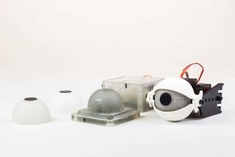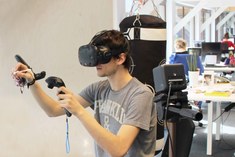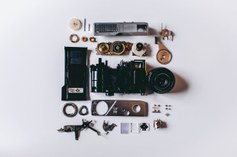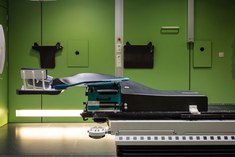design.industry
Goal
Within design.nexus, we want to use product development to find solutions to various challenges that manufacturing companies are facing.
These challenges are:
- Increasing complexity
- Increased product variety, personalization, mass customisation
- Impact of the digital revolution on design, manufacturing, services (IoT, Industry 5.0, smart products, social media)
- Evolution towards industrial, human-centered cyber-, biophysical systems
- Connected product-service or consumer-production systems
- Understanding the transformation processes involved (workers, investment, education and training, knowledge).
Focus
Product design for new digital production techniques
We are constantly exploring new digital production techniques (e.g. 3D printing) and researching the opportunities of these techniques for product design. We also research the opposite, i.e. which products could be suitable for certain digital techniques.
Data-based and algorithm-driven parametric product design
Data (from users, for example) can be used via algorithms to control designs parametrically. In this way, unique designs can be generated on the basis of the acquired data. Designs that can also be produced using the new digital production techniques.
Digital design tools
Many new design tools also offer new opportunities to designers in the industry. We explore new digital design tools (such as virtual reality) and look at how we can use these tools in the design process.
Productdesign for easy and intuitive manual assembly
Many products consist of different components that are assembled. Very often people are used for this assembly. As product designers, we are exploring how we can design our products to make assembly easier and more intuitive. But also how they can be disassembled more easily, with a view to repair, modularity and sustainability.
Labs
Computational Design & Fabrication Lab
In our Computational Design & Fabrication Lab, we explore and combine the latest digital design techniques with digital fabrication techniques. We investigate how to best design products for new digital production techniques (optimising the design for these new techniques). But we also explore these digital techniques in order to identify opportunities for new designs.
Product design lab for new industrial production (Industry 5.0)
Medical Product Design Lab
In our Medical Product Design lab, in addition to the issues that are relevant to a product from a medical point of view (technical), we also investigate and interact with the various stakeholders (patients, doctors, nurses, etc.). Our design methodology and iterative approach aims to design the most optimal medical product system for these different stakeholders.
Research projects & PhD research
VLAIO - TETRA: Designs for easy and intuitive manual assembly
In this project, we are going to refine our "design for assembly meaning (DFAM)" methodology in cooperation with various companies and adapt it to various business contexts. The methodology is aimed at making assemblies easier but also more intuitive for operators. The interaction of the operator with the product to be assembled is central to this. Easy disassembly with a view to sustainability and maintenance of the products is also addressed.
Bio-inspired braces: how seahorses may solve rehabilitation consequences of traditional braces
Development of a novel total elbow arthroplasty design based on new insight into the anatomy and biomechanics of the elbow
The aim of this project is to better understand the elbow's anatomy and biomechanics and to develop an innovative modifiable implant based on these novel insights.
PhD research
- Max Schoepen / Exploring the advanced capabilities of the Open Access Breast Couch Exploring the advanced capabilities of the Open Access Breast Couch
- Dirk Steuperaert / Validity and value of IT Governance Frameworks, the COBIT case



